With the file request feature in OneDrive or Sharepoint, you can choose a folder where others can upload files using a link that you send them. People you request files from can only upload files; they can't see the content of the folder, edit, delete, or download files, or even see who else has uploaded files.
With a file request:
-
Anyone with the file request link can send you a file; they don't need to have OneDrive.
-
All the files sent to you are saved in a single folder that you choose.
-
Every file will have a prefix to help you identify who uploaded it.
-
If two files with the same name are uploaded, OneDrive will automatically add a number to the name of the second file.
-
People who respond to your request can only upload files. They can’t view or edit the contents of your OneDrive.
Select an option below to learn more.
Here's how to request files:
-
In your OneDrive, select the folder where you want the files to be uploaded, and then select Request files.
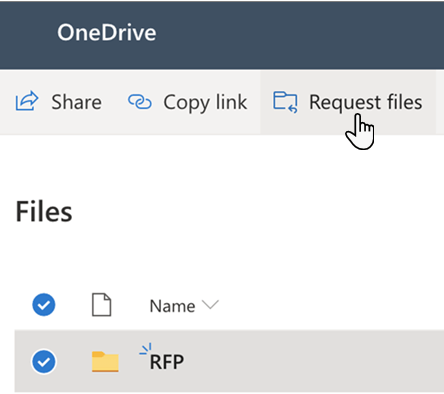
-
Under What files are you requesting, enter a descriptive name for the files you are requesting from others. You'll see this description when they get the file request.
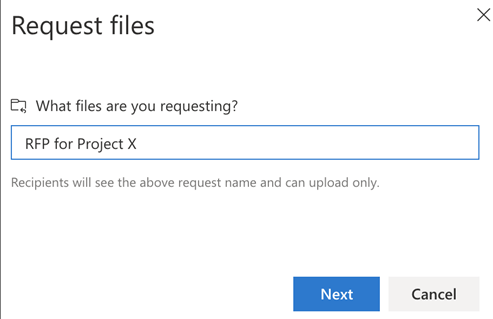
-
Select Next.
-
You can select Copy link to copy the request link and send it to anyone you would like to request files from, or you can enter the email address or addresses of the people you want to request files from. You can also type a message that will be included in the email that OneDrive sends to them.
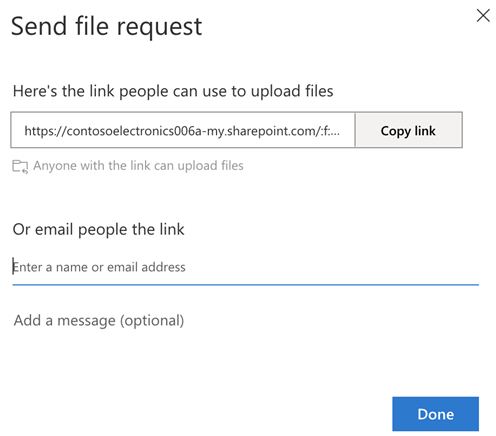
-
Select Done.
You’ll receive a notification email whenever someone uploads files to your file request folder.
If you want to edit the descriptive name of the file request, select the folder and select Request files again, then change the name. The people you sent the request to will see the new name when they upload files.
Anyone with the link will be able to upload files to the request. However, they aren't able to see or edit other contents in the folder or see who else is able to upload files.
When recipients select the link, they'll see:
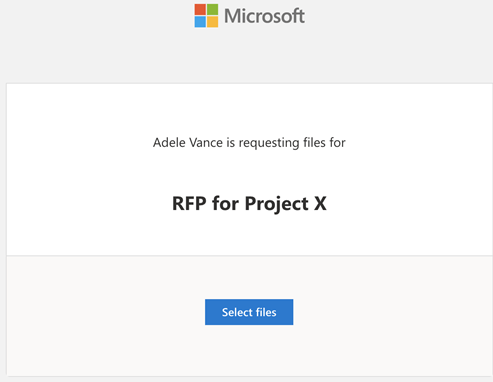
Notes:
-
If the recipient is not signed in, the recipient will be asked to add a first name and last name to help the requestor identify the different files uploaded. The provided first name and last name is not validated; it is purely for the requestor's convenience, and is not a guarantee of identity when the recipient is currently not signed in.
-
If the recipient is signed in and responds to the request, the identity is recorded as part of the upload.
-
Click Select files, browse to the appropriate folder, and select the file being requested. If you need to add additional files, select Add more files.
-
When you've selected all the requested files, select Upload.
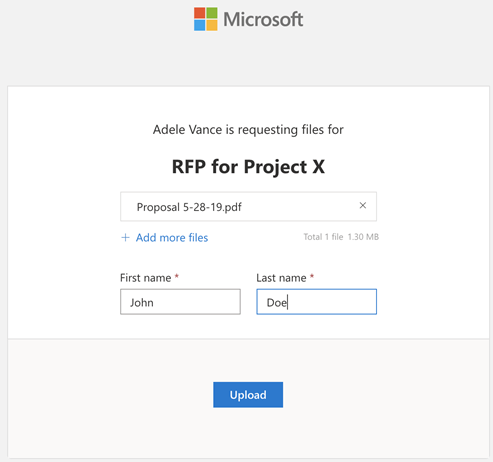
-
Recipients will get another notification once their files have been successfully uploaded.
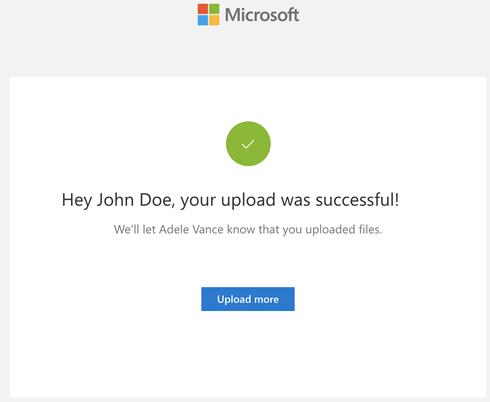
You can stop requesting files by deleting the file request link once you are done receiving files from others. Once you’ve deleted the link, people with the link won’t be able to upload files to that folder anymore.
-
In OneDrive, select the file request folder.
-
Select the ellipsis (…).
-
Select Manage Access.
-
Select the ellipsis (…) beside the request link in the Links Giving Access section.
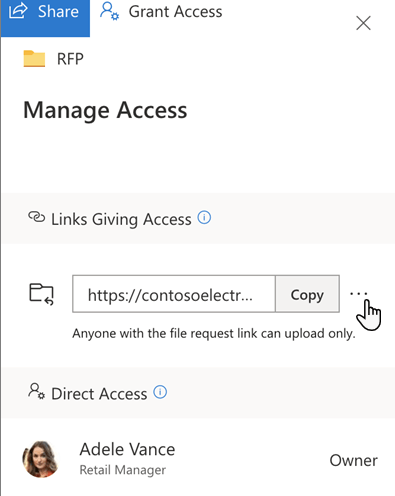
-
Select x next to the link.
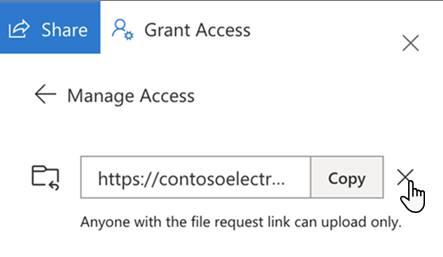
-
Select Delete link.
The link deletion can't be undone. If you need to start collecting files in this folder again, create a new file request on the folder and send your recipients a new link or email invitation.
Notes:
-
Your administrator must enable Request Files feature Enable File Requests in SharePoint or OneDrive - SharePoint in Microsoft 365.
-
This feature is not available for Office 365 operated by 21Vianet, OneDrive for home, or Office 365 Germany.










